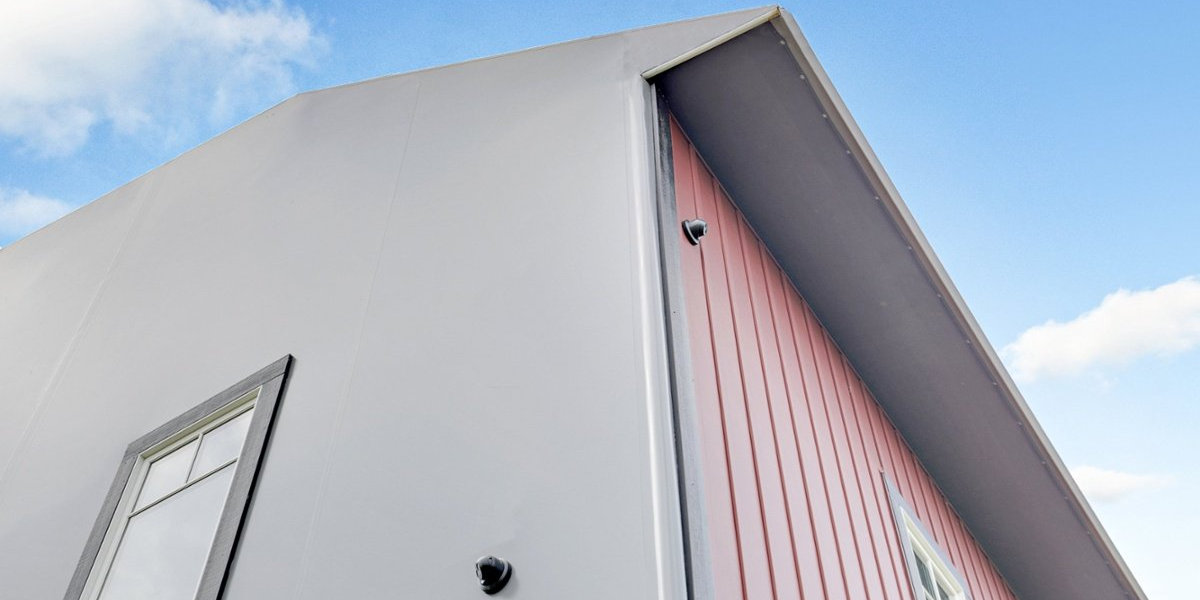Disadvantages of Monocover Fabric Buildings

Early fabric structures were constructed using a monocover – one large piece of fabric stretched to cover the entire roof and sidewalls. Monocovers are relatively inexpensive and easy to construct, and they are still used for small or temporary applications.
But the longevity and durability of any building depend on the quality of the materials and the strength of their connections. When it comes to strong attachments, monocover structures don’t stand up to buildings constructed of individual fabric panels.
Attachment Weaknesses in Monocover Fabric Structures
In a monocover building, the fabric is attached only to the building’s end frames. The middle building frames provide shape but no support to the fabric. In a monocover system, the full load of the fabric is transferred to the end frames.

As illustrated above, when wind blows over the peak of a building on the leeward side, the fabric comes into suction and lifts off the structure, to the point where fabric is no longer touching any of the interior trusses. Fabric is not designed to handle those forces without support, and in these situations fabric can tear away from the building.
Learn more about the engineering behind fabric structures by watching an archived webinar.
Another disadvantage of using one large cover on a building is that if one section of the cover tears or fails, the entire building must be reskinned. This results in lost time while there is no cover on the building. Repairing or replacing an individual panel is a comparatively simple, inexpensive process.
Load Transfer on Fabric Structures
Monocover building covers are exposed to more friction than buildings with individual fabric panels, as the fabric sags between the center frames and places extra weight on the fabric sitting atop the frames. Over time, this friction will weaken the fabric, and can lead to thinning or tearing.
Not all fabrics are created equal. Learn more about Legacy's exclusive Exxotec™ PVC fabric.
Additional loads from snow or wind also impact monocover and panel cover buildings differently. In a monocover building, snow will accumulate unevenly if it’s in a sag area or a tension area. Until the snow slides off the roof, the areas of accumulation are under additional stress.
Advantages of Individual Panels on Fabric Structures
Individual building panels allow greater design capabilities. The fabric is pre-tensioned via biaxial stretch and always kept flat, reducing the amount of friction and bending that can damage the fabric. Individual panels of fabric attached to each roof frame will last longer and allow for more design options, including overhangs and unique building shapes. A fabric panel building on a rigid steel frame will better support environmental and ancillary loads.
The engineering of fabric panel buildings is predictable and identical to that of pre-engineered metal buildings (PEMB). The fabric panels also serve as a redundant lateral brace to the top flange, although this redundant brace is not counted upon for structural stability.
And like all construction, professional installation will ensure the safest, longest-lasting attachment. Investing in quality installation will prevent future maintenance issues and ultimately save on the building’s life cycle costs.
Interested in learning more about fabric structures? Contact us to arrange a personal consultation.
Subscribe to our Blog
Recent Posts
- 5 Factors Every Project Owner Should Consider Before Approving Building Materials
- The 20-Year View: How Material Choices Impact Long-Term Operational Costs
- Climate Resilience in Commercial Construction: Why Traditional Methods May Not Be Enough
- Speed and Quality: The Role of Hybrid Building Materials
- Beyond the Bleachers: Designing Visually Striking Sports Facilities
